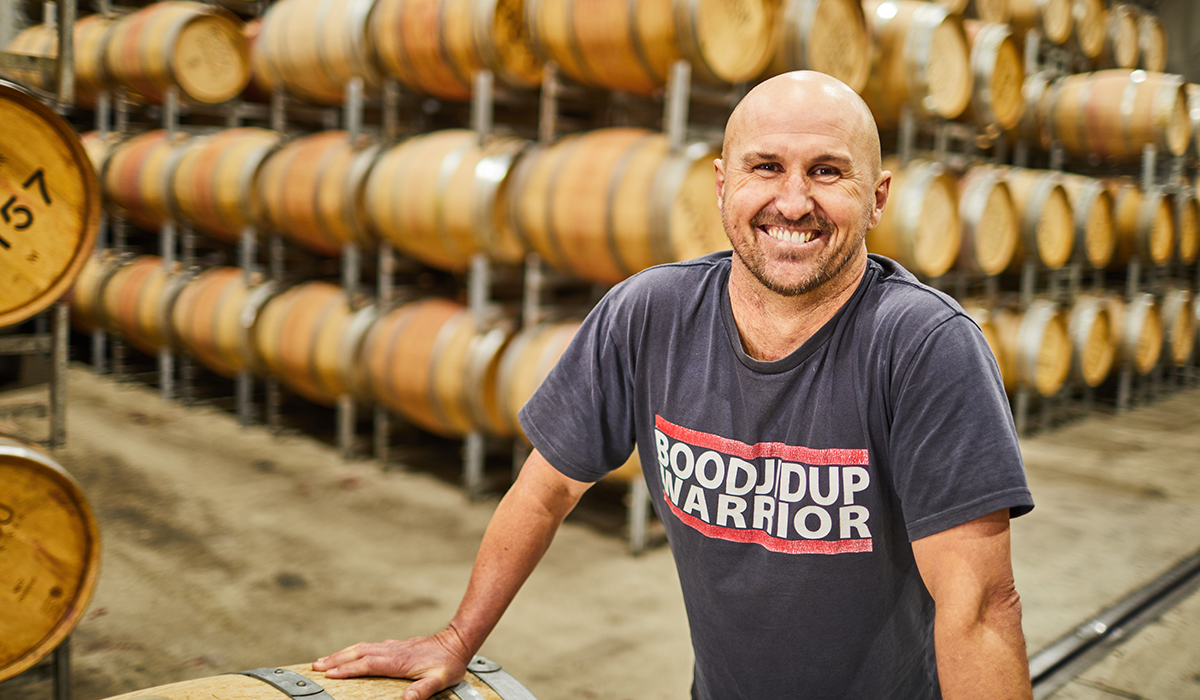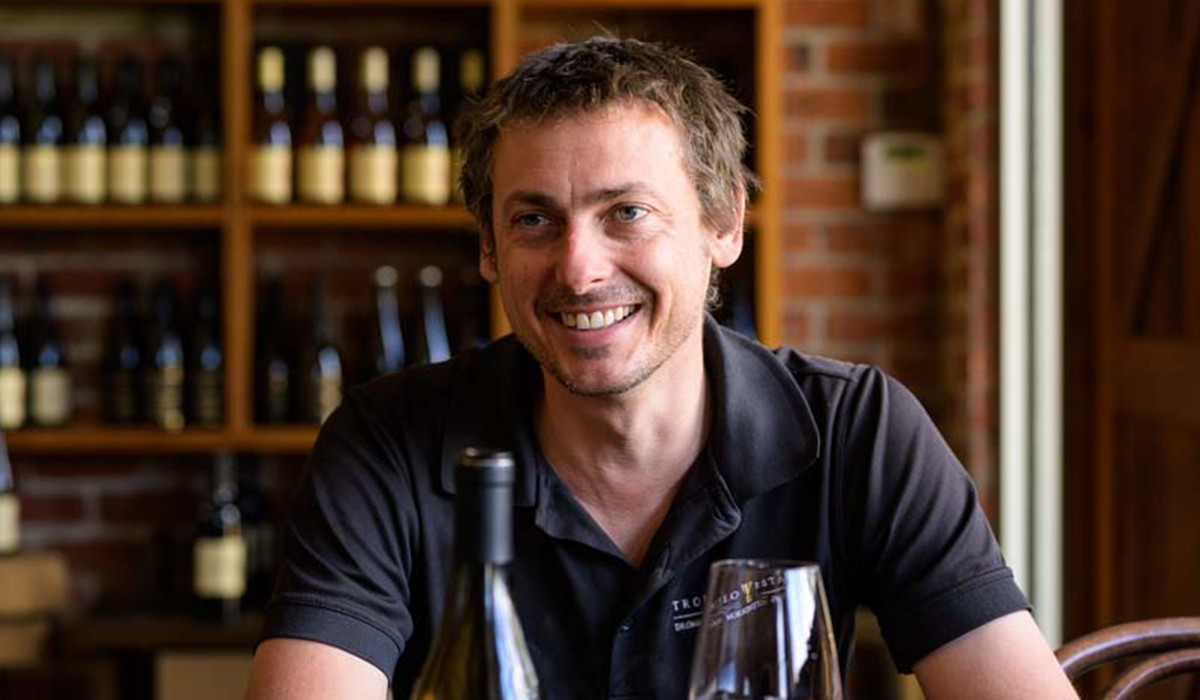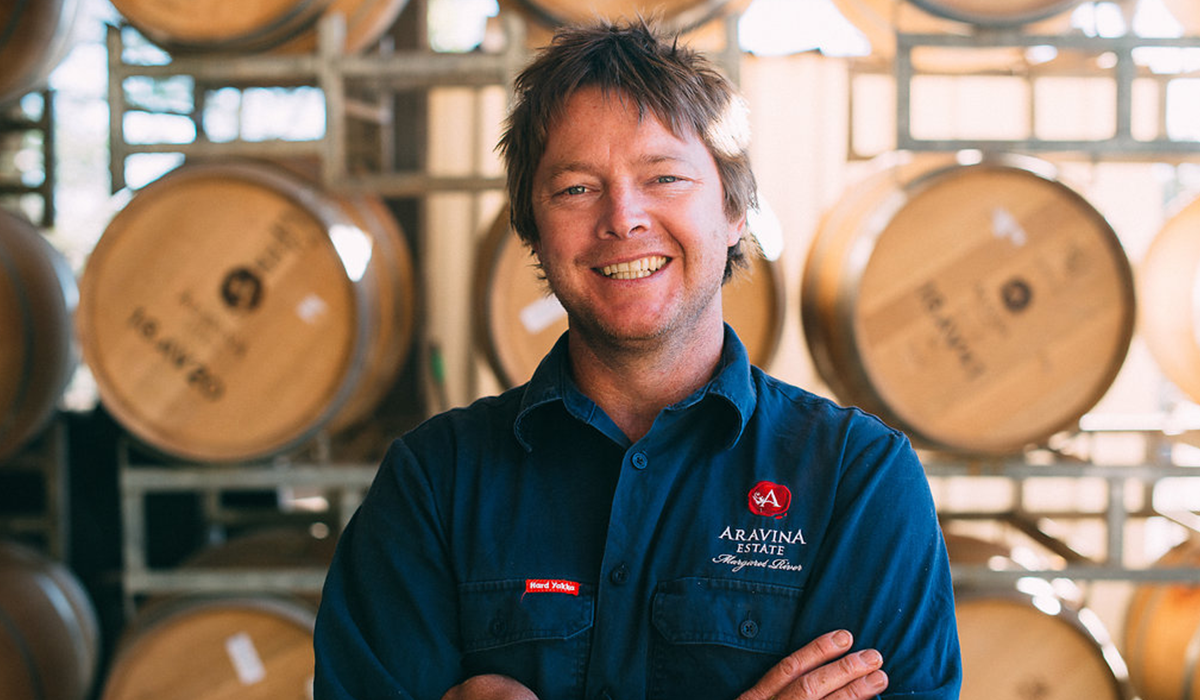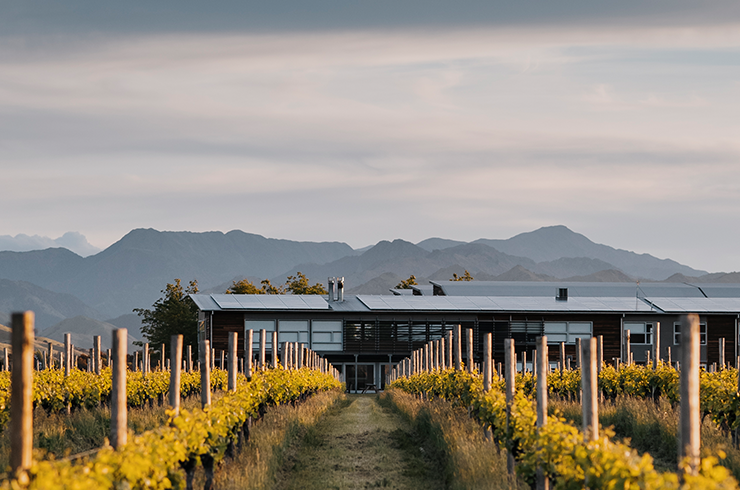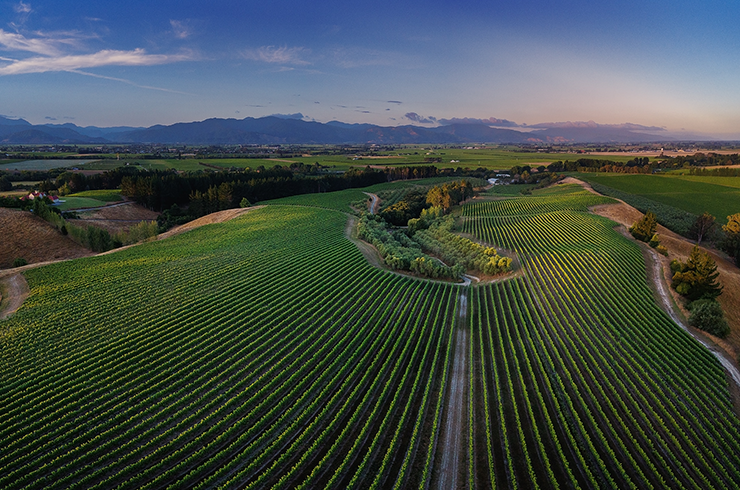Originating in Burgundy in France, today, chardonnay is planted in almost every wine-producing region in Australia. It thrives in regions like Victoria's Yarra Valley, the Mornington Peninsula, and Geelong, over west in Margaret River and the Great Southern, the Adelaide Hills in South Australia, and in New South Wales the Hunter Valley and Orange.
We speak to the winemakers behind Yering Station, Xanadu, Trofeo Estate, Medhurst, Cullen Wines, Bellbrae Estate, and Aravina Estate about growing and producing chardonnay, the winemaking process and how their individual styles evolve each vintage.
Brendan Hawker – Yering Station, Yarra Valley VIC
H. What makes your chardonnay unique?BH. Given the number of different vineyard sites contributing to this blend, I believe it captures a wide range of characters that make Yarra Valley chardonnay so sought after. A full spectrum of citrus through to white stone fruit flavours, and some lovely floral and savoury complexities, all backed with vibrant, natural acidity.
H. How do you approach the winemaking process when it comes to chardonnay?
BH. We seek to make the most balanced expression from our individual blocks and vineyards, which we keep separate until blending before bottling. In the vineyard, vine balance and keeping plant stress to a minimum is key. Once in the winery we aim for clean barrel ferments – without overworking the wines – to deliver the unique expressions each vineyard/block produces.
H. Does your style change with each vintage?
BH. There are subtle changes with each vintage, as this wine should reflect the season it was grown in. If it was a warm season, I'd expect to see a little more power than if it was cool year. If it was cooler, I'd expect it to be a bit leaner and more restrained. Regardless of the year, there should always be balance and freshness in the wine. Through thoughtful and careful blending we will continue to achieve this.
Glenn Goodall – Xanadu, Margaret River WA
H. What makes your chardonnay unique?GG. Our wines have the fingerprint of where they are grown. This wine not only has the fingerprint of Gingin clone, from an excellent Margaret River vintage but, being predominantly estate grown, the wine also has the DNA of our Boodjidup vineyards (including Stevens Road). It's generous, bright and tangy with a wonderful purity of fruit.
H. How do you approach the winemaking process when it comes to chardonnay?
GG. We maintain healthy vines and make thoughtful harvesting decisions that deliver a palette of colours to put blends together. In the winery it’s just a ‘keep it simple stupid’ approach! Prudent oak selection to frame fruit (rather than smother it!) is important. I like to preserve primary fruit and natural acidity (no MLF) with the vineyard’s personality accentuated by wild fermentation.
H. Does your style change with each vintage?
GG. Vintage plays a big part in wine style, however, having been blessed with so many consistent vintages in Margaret River, I’d like to think our style of chardonnay has been relatively consistent. Our older vines continue to deliver quality, although as yields have declined, we have put a lot of time into vineyard rejuvenation as well as new plantings.
Richard Darby – Trofeo Estate, Mornington Peninsula VIC
H. What makes your chardonnay unique?RD. Our 2022 Amphora Chardonnay stands out for being exclusively fermented and aged in terracotta amphora. With loads of fruit upfront, plenty of structure and a lingering creaminess, it appeals to both traditional chardonnay drinkers and those that are a little untrusting of the variety.
H. How do you approach the winemaking process when it comes to chardonnay?
RD. My approach is to keep it as simple as possible and let the fruit do the talking. The vineyard is managed organically and a lot of time and focus is spent there to produce the best fruit possible. This makes the winemaking a lot easier. I try to encourage wines with texture along the way to add depth in the glass.
H. Does your style change with each vintage?
RD. Our style is fairly consistent – I like to see the vintage represented in the bottle. My winemaking process had to evolve early on as we moved into all wine being made in amphora. It's now tweaked slightly every year but does not change dramatically. However, we do have to allow for change, and be agile, depending on what the season throws at us.
Rohan Smith – Medhurst, Yarra Valley VIC
H. Tell us about your chardonnay.RS. The 2022 growing season was the third cool season in a row. Unlike the solid crop of 2021, the season produced some low yields, though once again we saw wines of the highest of quality. The 2022 packs a core of lime, nectarine and white flowers and some lovely tension from natural acids. The French oak spice frames the long, powerful finish.
H. How do you approach the winemaking process when it comes to chardonnay?
RS. One of the most important decisions to make is when to harvest the fruit to achieve optimal ripeness, and ensure a complex flavour profile and perfect acid balance with delicate phenolics. Once the fruit arrives in the winery it's chilled overnight, whole bunch pressed and transferred to barrel (approximately 30 per cent new) with full solids for fermentation and subsequent maturation in the same barrels for 9–11 months. Allowing the fruit to fully express itself is the key to the process!
H. Does your style change with each vintage?
RS. We always aim to produce wines of the highest quality and with stylistic consistency, with vintage variation playing a part in the shape of the finished wine. As the vines have matured over the past 10 years we've seen the style evolve and the wines develop to be concentrated and powerful examples of cool-climate chardonnay.
Vanya Cullen – Cullen Wines, Margaret River WA
H. Tell us about your chardonnay.VC. This wine is a true expression of the ancient soils of Wilyabrup, Margaret River – a mixture of granite and gravelly sandy loam. The maritime climate, rocky soils, dry farming and biodynamic practices all play an integral part in the wines’ creation. Fruit driven with great complexity and intensity, making it iconic and of quintessential personality.
H. How do you approach the winemaking process when it comes to chardonnay?
VC. This wine was hand-harvested around the biodynamic calendar on Fruit and Flower Days, including one pick of a full moon, and Moon Opposite Saturn Day. The fermentation took place in 50 per cent new biodynamic puncheons, where it was left to mature for a further six months. Bâtonnage during fermentation and no fining filtration or cold stabilisation to bottle.
We do not make additions to our wines as we want the purity and aliveness to be expressed in the wine. We focus on the wine to represent a transparent and beautiful impression of the land on which they grow and so create healthy living systems and interfere as little as possible in the winemaking.
H. Does your style change with each vintage?
VC. Each vintage we make a wine that is expressive of that vintage. We let the fruit speak for itself. The wines at Cullen are made in the vineyard with the biodynamic methods giving healthy soil, plants and grapes. This sense of place, or terroir, is a holistic lifestyle that incorporates all aspects of being at Cullen.
David Crawford – Bellbrae Estate, Geelong VIC
H. Tell us about your chardonnay.DC. This is our premium chardonnay that is from two select clones in our 25-year-old vineyard. Hand-picked and pressed immediately, the juice is clarified and fermentation is started under cold conditions in tank. After 48 hours, it is transferred to new (20 per cent), one year old (40 per cent) and two year old (40 per cent) French oak hogsheads where it completes primary fermentation. Depending on the year, a small percentage of barrels undergo MLF and in 2021 we did approximately 10 per cent.
H. How do you approach the winemaking process when it comes to chardonnay?
DC. With subtlety...we try to build our premium wines with layers of subtle tannin overlaying solid fruit presence. This starts at harvesting, through fermentation and into barrel maturation. Every part of the process contributes to the textural make-up of the wine, which hopefully complements the fruit flavours.
H. Does your style change with each vintage?
DC. Yes, it does – largely around mouthfeel and texture. In the cooler years, we try to manipulate the total acidities so that we still have rounder mouthfeel and not too high acid drive. In warmer years, it's about preserving fruit and acid characters and maintaining balance without too much alcohol.
Ryan Aggiss – Aravina Estate, Margaret River WA
H. Tell us about your chardonnay.RA. Growing chardonnay is always challenging and at times it's a stressful part of my role. A moderately early developing variety, chardonnay is always the first to feel the effects of spring storms, pests, disease and birds. Sometimes I feel like I'm in the two blocks every day, slowly but surely creating some kind of viti’s relationship that extends to the family and staff. I'm constantly dragging my kids through the blocks on the weekends to help solidify decisions we make. Then all of this is forgotten once we put the picking bins out and these much loved bunches come safely into the winery.
H. How do you approach the winemaking process when it comes to chardonnay?
RA. It's very simple once the fruit is in the winery. The fruit is whole bunch pressed to both puncheon and barriques, then undergoes natural fermentation before being matured on lees for between eight and 10 months (depending on the year and growing season).
H. Does your style change with each vintage?
RA. Picking dates obviously oscillate due to the growing season, and then once in the winery things like allowing malolactic fermentation (MLF) to occur, or not, is based on the profile of the palate and depth of flavour. The site allows us to pick slightly against the greater curve for the region. The 2019 vintage was wet and cool; we picked later and got nice ripeness without a need for MLF. The 2020 vintage was the driest growing season and lowest yielding vintage for us ever, but I picked earlier and allowed around 60 per cent MLF to occur, which allowed the wine to be fresher than most but still with some obvious richness. After nine years I'm almost getting my head around it.

